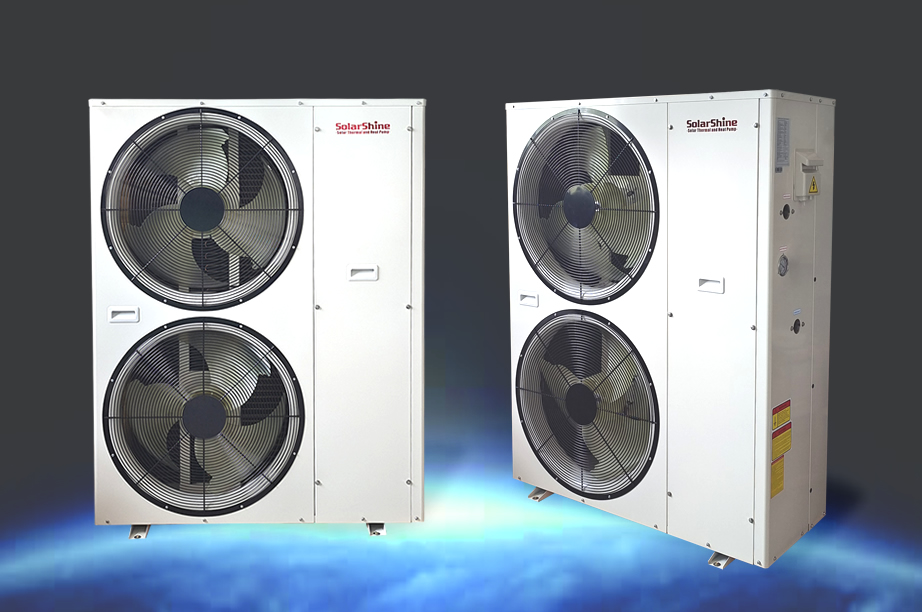The working principle of heat pumps in cold climates
Air source heat pump is the most common type of heat pump technology. These systems use ambient air from outside the building as a heat source or radiator.
The heat pump operates in cooling mode using the same process as air conditioning. But in heating mode, the system uses external air to heat the refrigerant. The heat pump compresses the refrigerant to produce hotter gas. Thermal energy moves within the building and is released through indoor units (or through piping systems, depending on the structure of the system).
A heat pump in a cold climate will keep you warm throughout the winter.
When the refrigerant is significantly lower than the outdoor temperature, the heat pump provides reliable heating. In mild weather, heat pumps in cold climates can operate with an efficiency of up to 400% – in other words, they generate four times the energy consumed.
Of course, the colder the weather, the harder it is for the heat pump to work to provide heat. Below a certain temperature threshold, the efficiency of the system will decrease. But this does not mean that heat pumps are not suitable for temperatures below freezing point.
Cold weather heat pumps (also known as low ambient temperature heat pumps) have innovative features that enable them to operate efficiently at temperatures below – 30 degree. These functions include:
Cold weather refrigerant
All air source heat pumps contain refrigerant, a compound that is much colder than outdoor air. Heat pumps in cold climates typically use refrigerants with boiling points lower than traditional heat pump refrigerants. These refrigerants can continue to flow through the system at low ambient temperatures and absorb more heat from the cold air.
Compressor design
In the past decade, manufacturers have made improvements to compressors to reduce the energy required for operation and improve durability. Heat pumps in cold climates typically use variable compressors that can adjust their speed in real-time. Traditional constant speed compressors are either “on” or “off”, which is not always effective.
Variable compressors can operate at a low percentage of their maximum speed in mild weather and then switch to higher speeds at extreme temperatures. These inverters do not use either all or none methods, but instead extract an appropriate amount of energy to keep the indoor space at a comfortable temperature.
Other engineering optimizations
Although all heat pumps use the same basic process to transfer energy, various engineering improvements can improve the efficiency of this process. Cold climate heat pumps can utilize reduced ambient air flow, increased compressor capacity, and improved configuration of compression cycles. When the size of the system is suitable for application, these types of improvements can greatly reduce energy costs, even in the cold winter of the Northeast, where heat pumps are almost always running.
Comparison between heat pumps and traditional heating systems in cold climates
The efficiency of heat pump heating is measured by the Heating Season Performance Factor (HSPF), which divides the total heating output during the heating season (measured in British thermal units or BTUs) by the total energy consumption during that time period (measured in kilowatt hours). The higher the HSPF, the better the efficiency.
Heat pumps in cold climates can provide HSPF of 10 or higher – in other words, they transmit much more energy than they consume. During the summer months, the heat pump switches to refrigeration mode and operates efficiently (or more efficiently) like the new air conditioning unit.
High HSPF heat pumps can cope with cold weather. Heat pumps in cold climates can still provide reliable heat at temperatures below -20 ° F, and many models are 100% efficient at temperatures below freezing point. Due to the fact that heat pumps consume less electricity in mild weather, their operating costs are much lower compared to traditional systems such as combustion furnaces and boilers. For building owners, this means significant savings over time.
This is because forced air systems like natural gas furnaces must generate heat, rather than transferring it from one place to another. A brand new high-efficiency furnace may achieve a fuel utilization rate of 98%, but even inefficient heat pump systems can achieve an efficiency of 225% or higher.
Post time: Apr-17-2023


